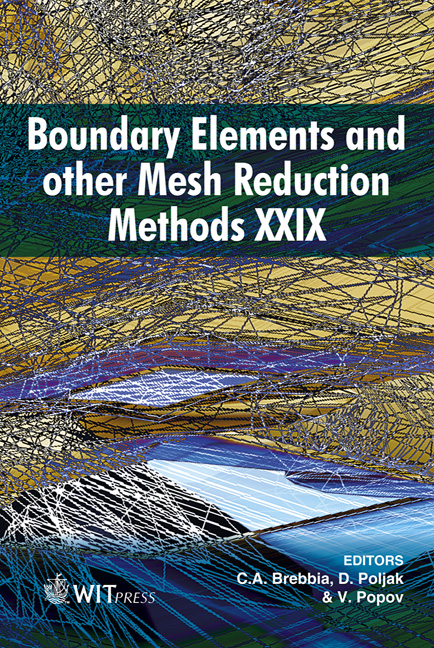Linear Analysis Of Building Floor Structures By A BEM Formulation Based On Reissner’s Theory
Price
Free (open access)
Transaction
Volume
44
Pages
10
Published
2007
Size
511 kb
Paper DOI
10.2495/BE070221
Copyright
WIT Press
Author(s)
G. R. Fernandes, D. H. Konda & L. C. F. Sanches
Abstract
In this work, the plate bending formulation of the boundary element method (BEM) based on the Reissner’s hypothesis is extended to the analysis of zoned plates in order to model a building floor structure. In the proposed formulation each sub-region defines a beam or a slab and depending on the way the subregions are represented, one can have two different types of analysis. In the simple bending problem all sub-regions are defined by their middle surface. On the other hand, for the coupled stretching–bending problem all sub-regions are referred to a chosen reference surface, therefore eccentricity effects are taken into account. Equilibrium and compatibility conditions are automatically imposed by the integral equations, which treat this composed structure as a single body. The bending and stretching values defined on the interfaces are approximated along the beam width, reducing therefore the number of degrees of freedom. Then, in the proposed model the set of equations is written in terms of the problem values on the beam axis and on the external boundary without beams. Finally some numerical examples are presented to show the accuracy of the proposed model. Keywords: plate bending, boundary elements, building floor structures. 1 Introduction The boundary element method (BEM) has already proved to be a suitable numerical tool to deal with plate bending problems. The method is particularly recommended to evaluate internal force concentrations due to loads distributed over small regions that very often appear in practical problems. Moreover, the same order of errors is expected when computing deflections, slopes, moments
Keywords
plate bending, boundary elements, building floor structures.





